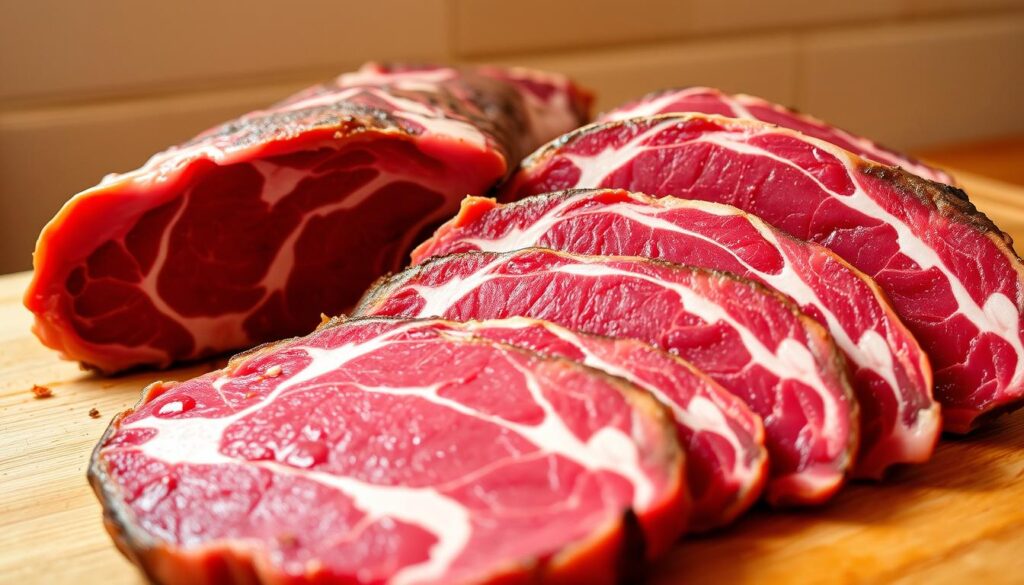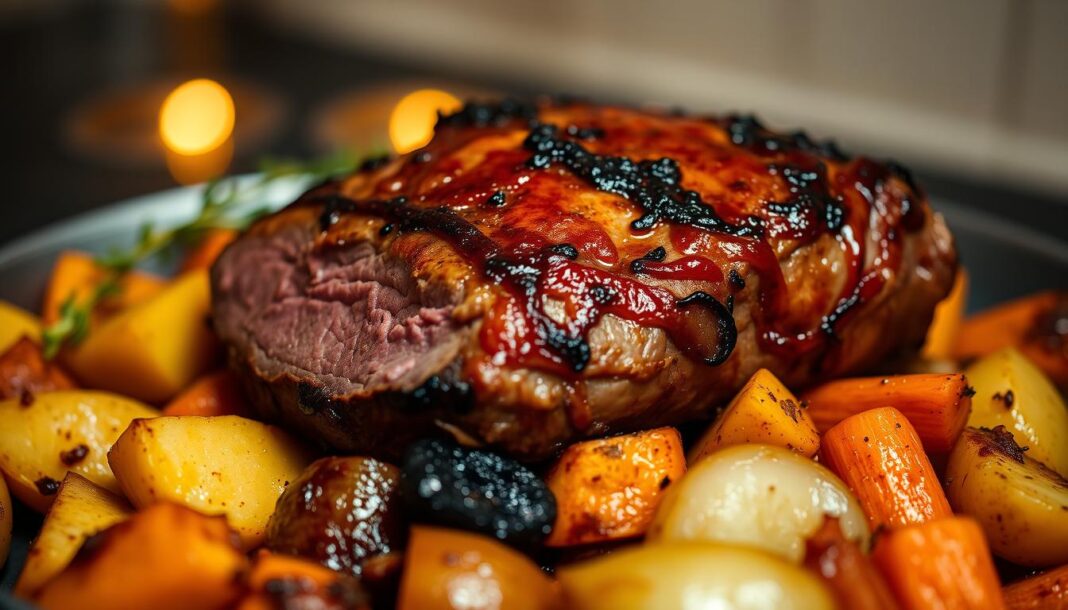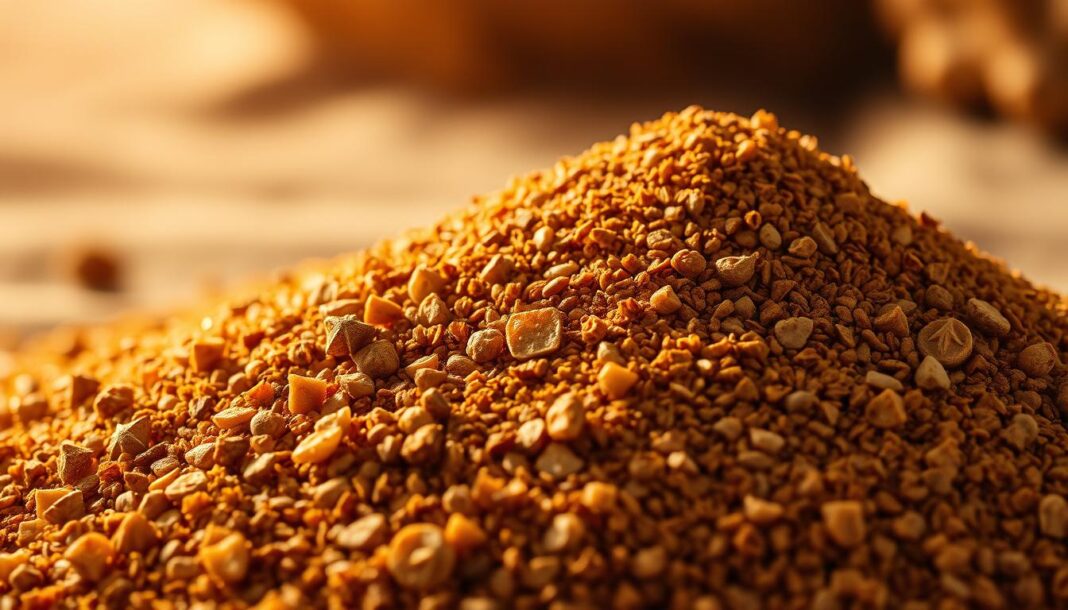Venison, the lean and nutritious meat from deer, is a culinary treasure often overlooked in modern kitchens. At Historical Foods, we believe that with the right techniques, anyone can transform venison into a restaurant-quality dish that rivals traditional beef preparations.
Cooking venison in the oven requires a nuanced approach, as its lean nature can make it prone to drying out if not done correctly. However, when prepared properly, venison offers a rich, gamey flavor that’s both sophisticated and satisfying.
Our comprehensive guide will walk you through the process of cooking deer meat to perfection, from understanding venison’s unique properties to serving a beautifully cooked final product. With our expert tips, you’ll be able to unlock the full potential of this high-protein, lean alternative to conventional meats.
Key Takeaways
- Learn expert techniques for cooking venison in the oven to achieve restaurant-quality results.
- Understand the unique properties of venison and how to work with its lean nature.
- Discover the health benefits of incorporating venison into your diet.
- Find out how to avoid common mistakes when cooking venison.
- Get tips on serving and presenting your perfectly cooked venison.
Understanding Venison Basics
To cook deer meat effectively, it’s crucial to understand its fundamental characteristics. Venison, or deer meat, is a lean protein that differs significantly from traditional livestock meat.
The Lean Nature of Deer Meat
Deer meat is very lean, lacking the fat that typically keeps meat moist during cooking. This leanness means that venison can become tough if not cooked correctly. The low fat content requires adjustments in cooking techniques to maintain tenderness.

Why Venison Gets a Bad Reputation
Venison often gets a bad reputation due to its potential for being tough or having a strong “gamey” flavor. However, these issues usually stem from improper handling or cooking methods. Proper field dressing, aging, and cooking techniques can significantly minimize undesirable tastes. For more detailed cooking techniques, you can refer to our guide on how to cook deer meat in the.
| Characteristics | Venison | Beef |
|---|---|---|
| Fat Content | Low | High |
| Cooking Method | Requires careful cooking to avoid toughness | Can be cooked with various methods with less risk of toughness |
| Flavor Profile | Can be gamey if not prepared correctly | Milder flavor |
Preparing Your Deer Meat for the Oven
As we dive into the world of cooking deer meat in the oven, let’s first explore the vital steps involved in preparing your venison. Proper preparation is the foundation of a delicious meal, and we’re here to guide you through it.
Properly Thawing Your Venison
Thawing your venison correctly is crucial. We recommend thawing your steaks completely before cooking, preferably in the refrigerator to preserve the texture and prevent moisture loss. This slow thawing process helps maintain the quality of the meat.
To Marinate or Not to Marinate
Marinating can significantly enhance the tenderness and flavor of your venison. Acidic ingredients in marinades, such as soy sauce, vinegar, and citrus juices, help break down muscle fibers, making the meat more tender. This is particularly beneficial for meat from older deer. A simple marinade can be made with Worcestershire sauce in a zip-lock bag, left for an hour to overnight.
Seasoning Options for Flavorful Venison
Seasoning is a critical step in bringing out the best flavors in your venison. While salt and black pepper are staples, other options like garlic salt, onion powder, rosemary, thyme, and paprika can add depth and complexity. The key is to balance flavors that complement the natural qualities of the meat without overpowering it.
Expert Techniques for Cooking Deer Meat in Oven
Mastering the art of cooking venison in the oven requires a combination of the right techniques and equipment. To achieve a perfectly cooked roast, we need to focus on a few key elements.
Essential Equipment for Perfect Results
To cook venison to perfection, you’ll need a few essential tools. A quality cast iron skillet is crucial for achieving a great sear, while a reliable meat thermometer ensures your venison is cooked to the right temperature.
The Sear-Then-Bake Method
Our signature technique involves searing the venison in a hot skillet with olive oil before finishing it in the oven. Preheat your oven to 350°F. Sear the seasoned venison for about 20 seconds per side, then immediately transfer the skillet to the oven. Cook for about 10 minutes for small cuts, adjusting the time as needed for larger cuts.
The Golden Rule: Don’t Overcook Your Venison
Venison’s lean nature means it can quickly become tough if overcooked. Use a meat thermometer to pull it from the oven at about 120°F, as it will continue cooking after removal. For most cuts, rare to medium-rare is ideal.
Resting Your Meat for Maximum Juiciness
After cooking, let the venison rest for 5-10 minutes before cutting. This allows the juices to settle back into the meat, ensuring maximum juiciness and tenderness.
Serving Your Perfectly Cooked Venison
The final step in enjoying your oven-cooked venison is serving it with style and complementary flavors. To maximize tenderness, slice your meat against the grain. For a special meal, serve your roast venison with traditional steakhouse sides like baked potatoes and salad, or try pairing it with roasted vegetables such as asparagus or Brussels sprouts.
Enhance your dining experience with complementary sauce options and beverage pairings. From red wine reductions to fruit-based sauces, and from robust red wines to surprising alternatives, there are numerous recipes to explore. By following these tips, you’ll be able to serve your venison with confidence and flair.


